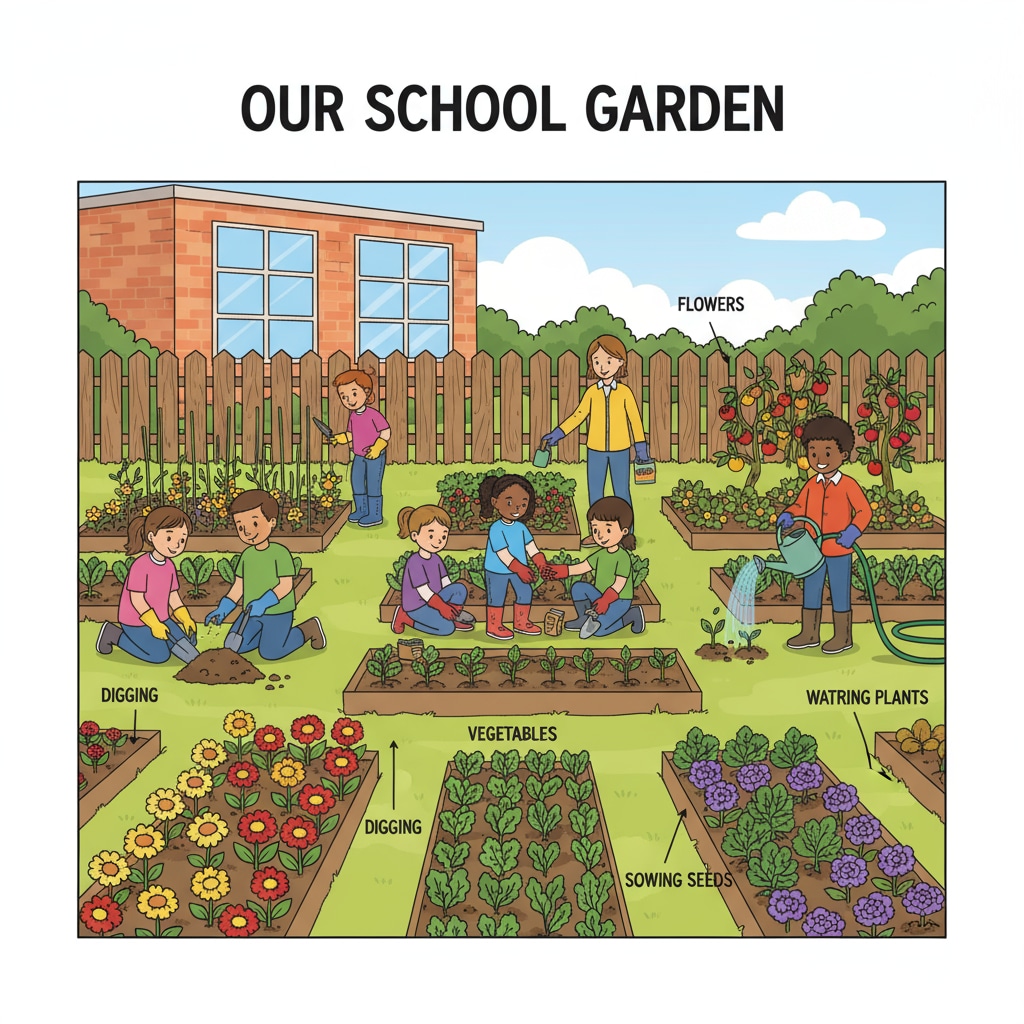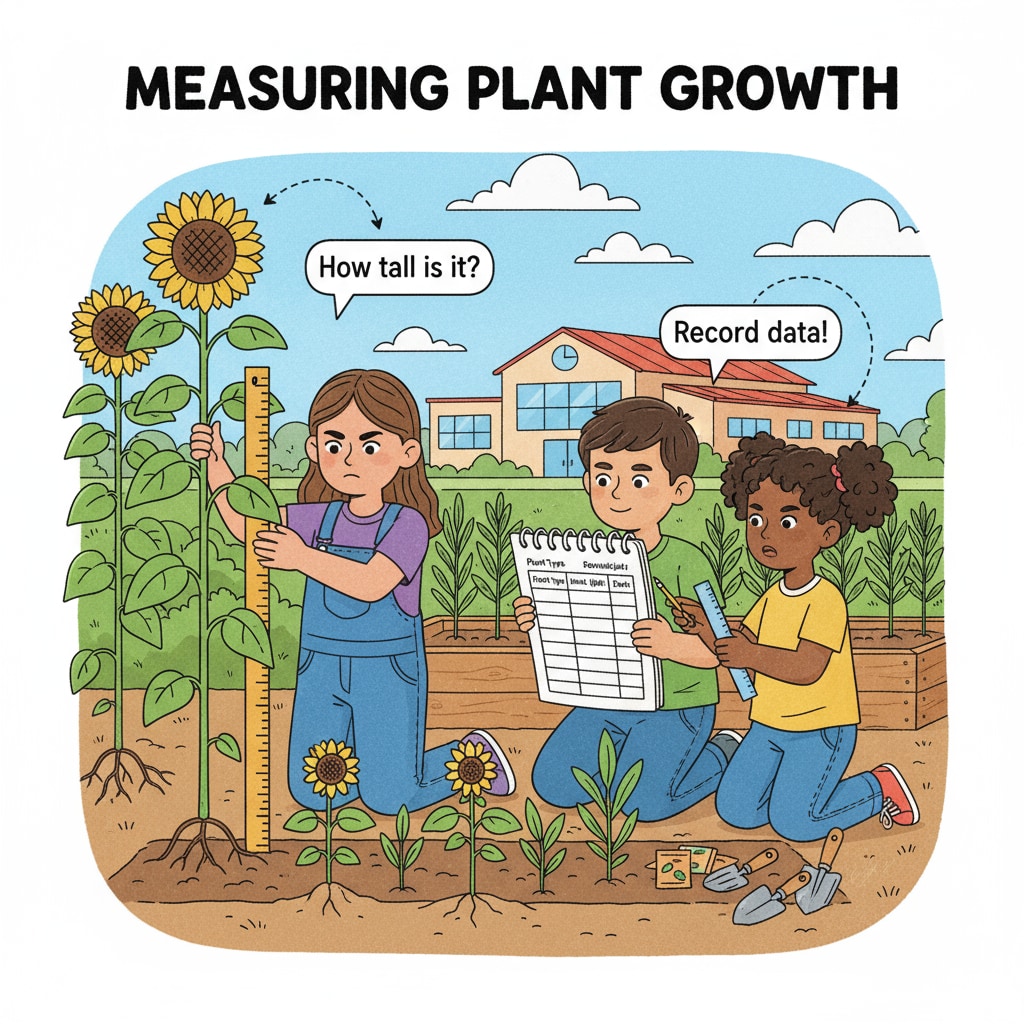School gardens, as remarkable educational tools for practical learning, have the potential to revolutionize the way students acquire knowledge and skills. These green spaces within the school premises are not just aesthetically pleasing but are also rich in educational value.

The Academic Advantages of School Gardens
School gardens provide a hands-on approach to various academic subjects. For example, in science classes, students can observe plant growth cycles, learn about ecosystems, and conduct experiments on soil quality. According to Britannica, this practical exposure enhances their understanding of theoretical concepts. In mathematics, they can measure the area of the garden beds, calculate the amount of seeds needed, and track the growth rate of plants, making math more tangible. Additionally, language arts can be integrated as students write journals about their garden experiences, describe the plants, and create stories inspired by the garden.

Cultivating Social and Emotional Skills
In addition to academic benefits, school gardens are excellent platforms for developing social and emotional skills. Working together in the garden promotes teamwork, communication, and cooperation among students. They learn to share tasks, support one another, and resolve conflicts. As they care for the plants, students also develop a sense of responsibility and patience. This nurturing environment helps them build self-confidence and resilience, which are essential for their overall well-being. As a result, students become more socially adept and emotionally mature individuals.
Furthermore, the tranquility of the garden can have a calming effect on students, reducing stress and anxiety. Spending time surrounded by nature allows them to relax and recharge, which is beneficial for their mental health. According to Wikipedia’s page on Outdoor Education, outdoor learning environments like school gardens contribute to students’ emotional development.
Readability guidance: School gardens offer a wealth of opportunities for students’ growth. By integrating academics with social and emotional learning, they create a holistic educational experience. The next section will explore how school gardens can also promote healthy living habits.
Promoting Healthy Living Habits
School gardens encourage students to adopt healthy living habits. When students grow their own fruits and vegetables, they develop an appreciation for fresh, nutritious food. They are more likely to try new, healthy foods that they have grown themselves. This hands-on experience can lead to a greater understanding of balanced diets and the importance of nutrition. For example, students can learn about the different nutrients in various plants and how they contribute to a healthy body.
Moreover, the physical activity involved in gardening, such as digging, planting, and weeding, helps students stay active. It provides an alternative form of exercise that is both enjoyable and educational. In this way, school gardens contribute to students’ physical health and well-being, promoting a lifestyle that values both mental and physical fitness.
Fostering Environmental Awareness
Another significant value of school gardens is the cultivation of environmental awareness. Students learn about the importance of conservation, biodiversity, and sustainable living. They witness firsthand the impact of human actions on the environment and understand the need to protect it. For instance, they can learn about composting, water conservation, and the use of natural pest control methods in the garden.
By being actively involved in the garden, students develop a connection with nature. This connection instills in them a sense of stewardship and a desire to make positive changes in the world around them. As they grow older, this environmental consciousness can lead to more sustainable choices in their daily lives.
Readability guidance: School gardens clearly have multiple educational values. Now, let’s turn our attention to the practical aspects of implementing school gardens.
The Feasibility of Implementing School Gardens
Implementing a school garden is indeed feasible with proper planning and resources. First, it is essential to assess the available space within the school. Even a small patch of land can be transformed into a productive garden. Next, involving the school community is crucial. Teachers, students, parents, and local volunteers can all contribute to the garden’s establishment and maintenance.
Funding is another aspect to consider. There are various sources of funding available, such as grants from educational institutions, local businesses, or community organizations. Additionally, fundraising activities within the school can help gather the necessary funds. Once the garden is set up, ongoing maintenance requires minimal resources, as students can take an active role in caring for it.
In conclusion, school gardens are powerful educational tools for practical learning. They offer a multitude of benefits, from academic enrichment to the development of social, emotional, and environmental awareness. By implementing school gardens, schools can create a dynamic learning environment that nurtures the holistic growth of students.


